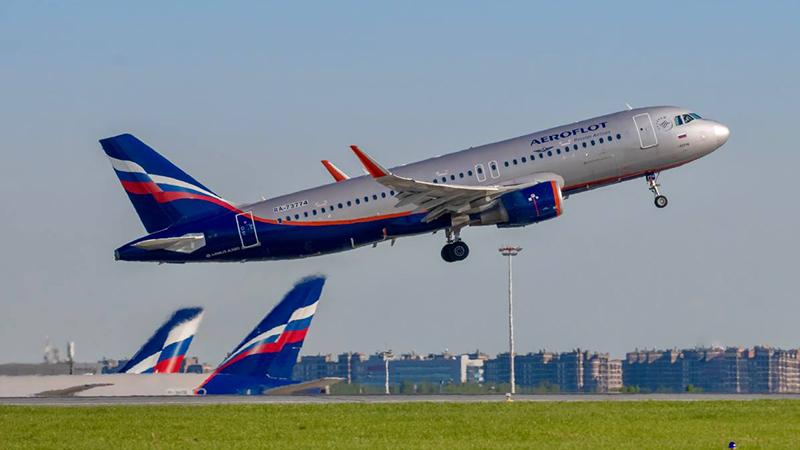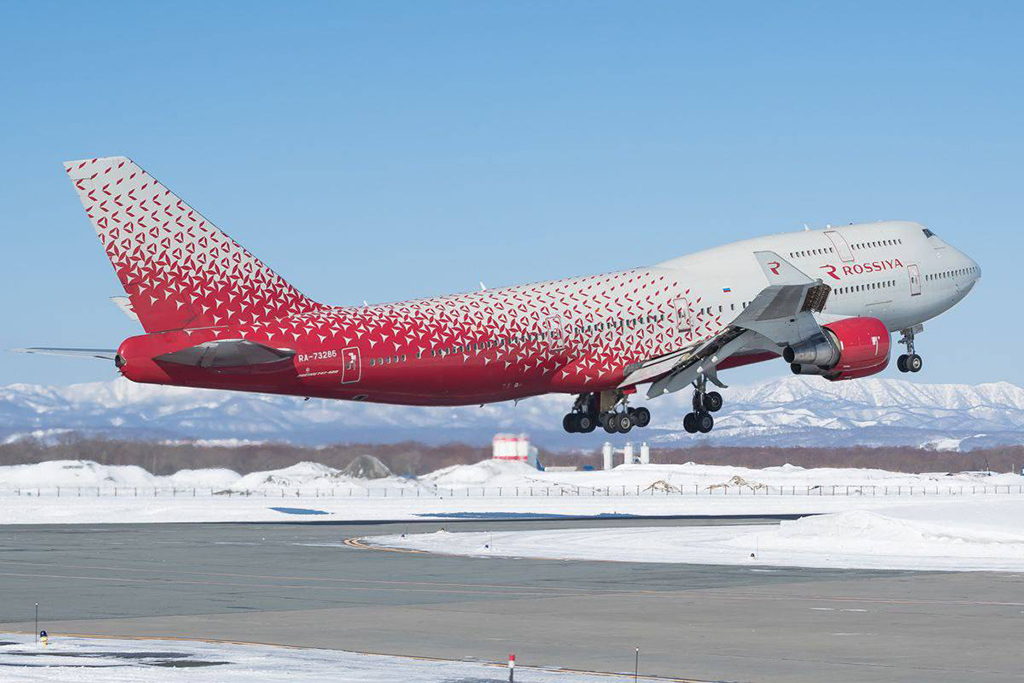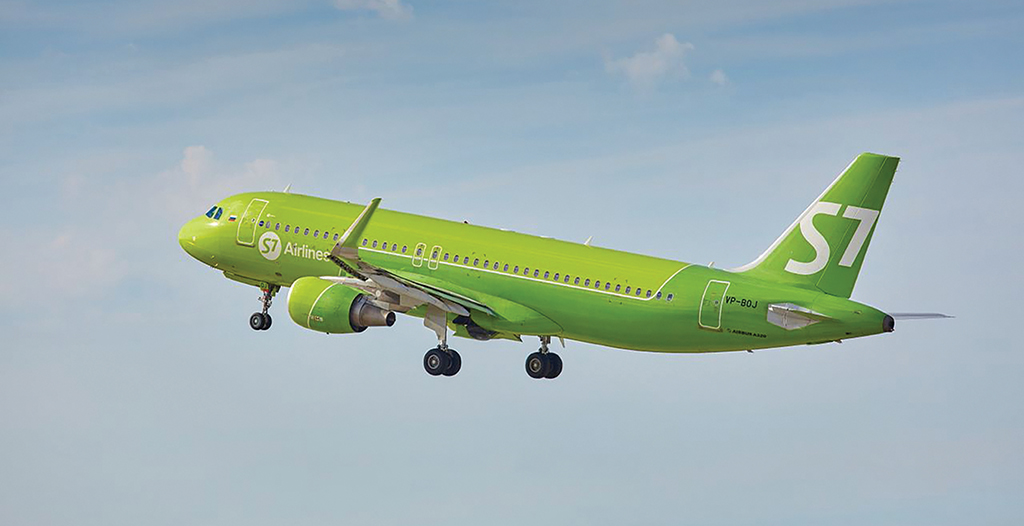This article is published in Aviation Week & Space Technology and is free to read until May 08, 2025. If you want to read more articles from this publication, please click the link to subscribe.
Can Russian Air Transport Grow Despite Sanctions Shock?

Aeroflot Group, which accounts for more than half of Russia’s passenger traffic, achieved a record passenger load factor in the first two months of this year.
Russian domestic airlines turned a profit in 2024, but government officials remain cautious about the growth potential of an industry that has been cut off from Western markets and maintenance services.
It took the Russian air transport industry three years to recover from the shock of the West’s 2022 sanctions in response to Moscow’s full-scale invasion of Ukraine. Russian domestic passenger traffic exceeded prewar levels in 2024, reaching 111.6 million passengers. Local airlines remained profitable, Russian newswire Interfax reported on April 3, citing 2024 financial statements. Among the top 10 carriers, which accounted for 87% of the country’s passengers, only Rossiya Airlines had losses that year.
- Most airlines were profitable in 2024
- Traffic is expected to decrease this year
Aeroflot Group generated the highest profits, at 22 billion rubles ($255 million), followed by Ural Airlines with 17.5 billion rubles and S7 Airlines with 14 billion rubles.
But Moscow remains guarded about further growth. Russian Federal Air Transport Agency (Rosaviatsia) Director Dmitry Yadrov forecast in February that traffic is expected to reach only 109.7 million passengers this year. The agency’s subsidiary research center, the State Scientific Research Institute of Civil Aviation, was more pessimistic, predicting a drop to 95.1 million this year and 91.2 million in 2026. The center then expects the industry to start recovering and reach 126.8 million by 2030—still lower than in 2019, when Russian airlines carried an all-time record of 128.1 million passengers.

The results of this year’s first two months align with the forecasts. After stagnating in January, passenger traffic decreased by 3.4% in February, owing to the shrinking domestic market, which has shown only moderate growth since 2022. International air services, a major driver of the traffic increase in the previous years, grew only 6% in January and then came to a halt in February.
Russian airlines are clearly reaching their carrying capacities. Aeroflot, which accounts for more than half the country’s passenger traffic, had a record passenger load factor in the first two months of 2025, with 91% on international flights and 86.5% on domestic routes.
According to Rosaviatsia, local carriers operated about 620 foreign-made airliners with more than 19 seats in February. This is 16% less than three years ago, when sanctions first blocked carriers from purchasing new aircraft abroad. At that time, Moscow banned the return of leased airframes to their foreign owners because they provided about 90% of the country’s passenger traffic. However, some lessors seized their airliners at airports outside Russia or had them returned with permission from the Russian government.
Since then, several dozen aircraft were withdrawn from service due to technical issues. This has mostly affected older types, such as Boeing 747s, 757s and 767s, which had higher maintenance costs. Aeroflot subsidiary Rossiya lost 18% of its foreign fleet, including seven 747s and three 777s. One of Russia’s largest charter operators, Nordwind Airlines, cut its fleet by almost 60% with the withdrawal of 11 Boeing 737NGs and four 767s.

Russia’s largest private carrier, S7 Airlines, last year had to ground 15% of its fleet, including six Airbus A320neos and all eight A321neos, because problems with their Pratt & Whitney PW1100G engines could not be resolved without the OEM. These capacity cuts forced the airline to reduce traffic by 19%, minimize operations from Moscow and focus on developing its regional hubs in Irkutsk, Novosibirsk and Vladivostok.
Aeroflot has also made cautious plans for this year. “The minimum goal is to maintain the level of passenger traffic we achieved in 2024,” CEO Sergei Alexandrovsky said. The group plans to increase traffic by expanding international service after buying 192 aircraft—more than half its fleet—from foreign owners through an insurance settlement. This has eased its operations on those routes.
Moscow backed the effort by allocating 300 billion rubles from its national wealth fund in 2024 to help the largest carriers buy their aircraft, thereby clearing about 360 from foreign registers. Combined with domestically produced Sukhoi Superjets, this leaves Russian airlines with about 500 jets to fly to the 27 countries that are open to them in Asia, Latin America and the Middle East.

Aeroflot is also the first Russian carrier to add capacity through domestic wet-leasing, which the country legalized in September. The parent airline wet-leased three Airbus A330 widebodies from local charter carrier Azur Air in December for long-range flights from Moscow to the country’s far east. This remains the only wet-lease deal on the market; no other carriers are offering to lend spare aircraft.
The State Scientific Research Institute of Civil Aviation forecasts that 56% of foreign-made aircraft in Russia will be retired by the end of 2030, including all of S7’s A320/A321neos powered by Pratt & Whitney engines, which the carrier is expected to phase out by 2026.
Deliveries of locally made commercial airliners face constant delays and are now anticipated to start in 2026. Aeroflot has placed half the orders so far; private carriers must wait until after 2030 to receive new aircraft.
Authorities in Moscow have discussed the possibility of granting permission for local carriers to wet-lease from foreign airlines. But this initiative was heavily criticized by Russian industry experts and received no response from friendly countries due to the risk of secondary sanctions. The airlines are thus forced to rely solely on maintaining their existing fleets, which they are likely to operate longer than they had expected.
Major carriers, including Aeroflot and S7, have their own large aftermarket service providers that have mastered heavy maintenance procedures without assistance from Western manufacturers. Investigations by Russian and foreign media found that these airlines also continue to purchase aircraft parts and components for their Western-built fleets through intermediaries in third countries. In addition, S7 has launched in-house manufacturing of aircraft structural elements and components as well as restoration of blades for CFM International CFM56 engines.




